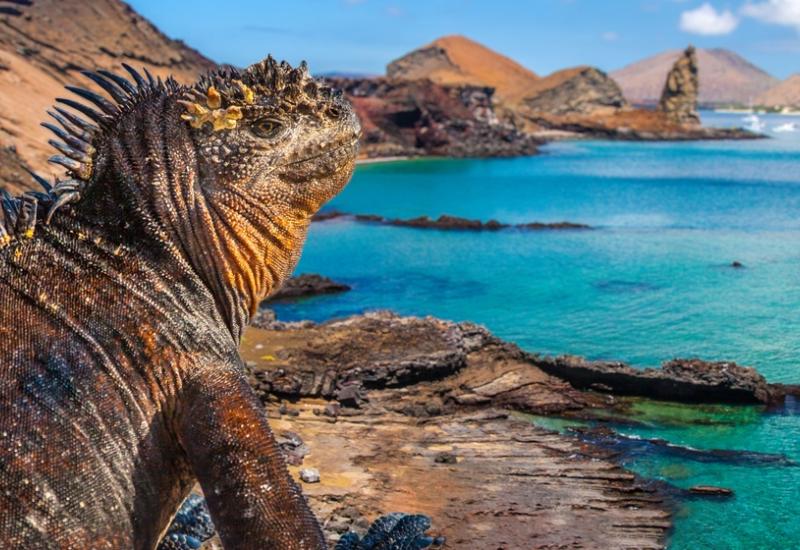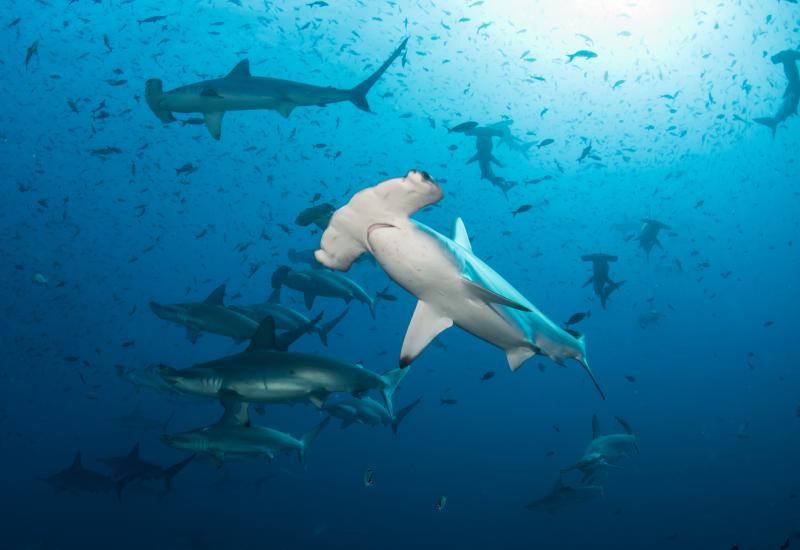Six Great Advanced Scuba Diving Destinations
Each year, we ask our readers to participate in our annual Readers Choice survey to determine the best dive destinations, resorts, operators and liveaboards. Nearly 5,000 readers provided feedback this year, which helped us to identify the value dive destinations below. View the complete 2020 Readers Choice Award rankings here.
1. The Great Lakes
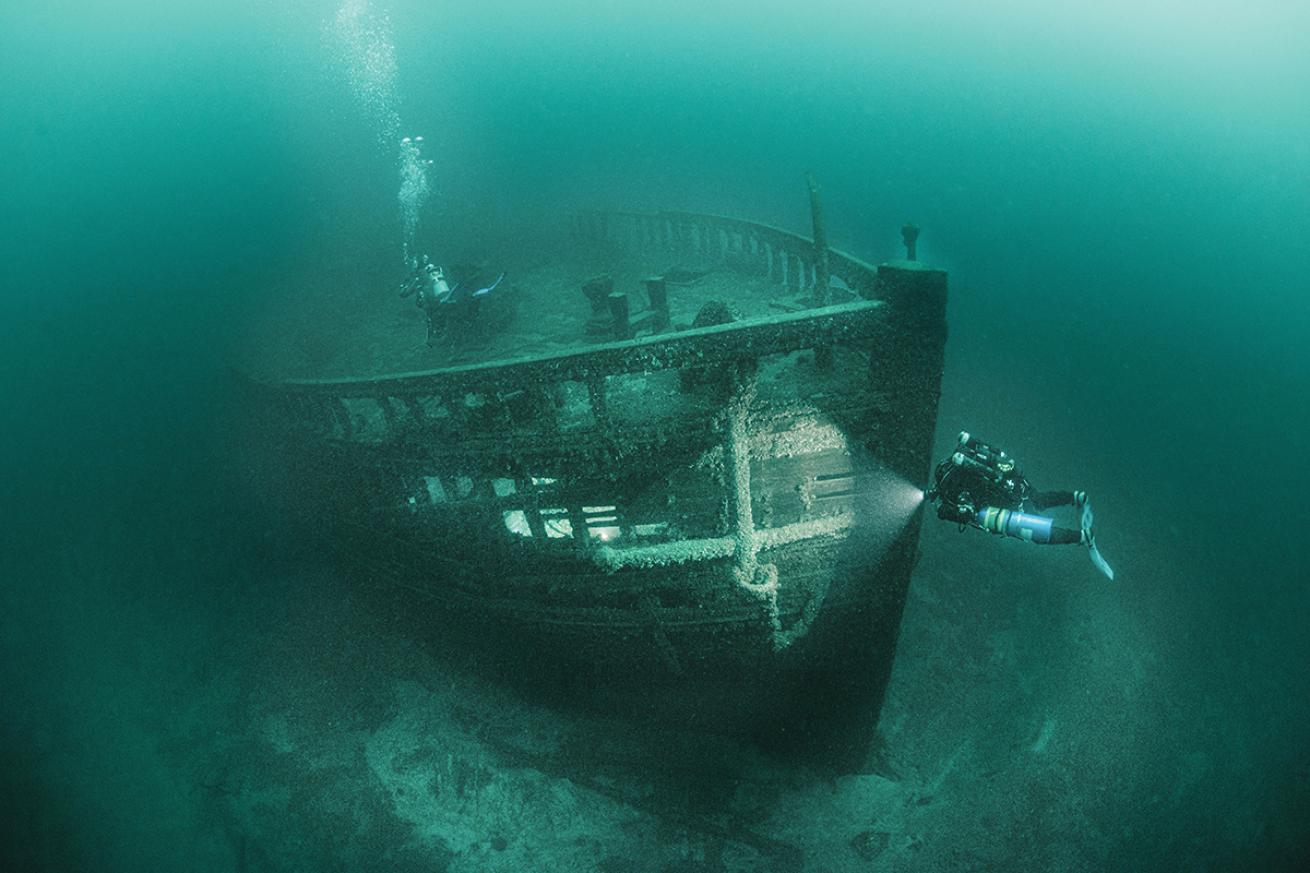
Becky Kagan SchottThe wooden freighter Eber Ward rests in the Great Lakes' Straits of Mackinac Shipwreck Preserve at a max depth of about 140 feet.
Divers suiting up to explore the storied, well-preserved and sometimes haunted wrecks of the Great Lakes know the challenges: cold water, deeper depths and unpredictable sea conditions. Trips to the most esteemed wrecks can be hard to plan because operators must rely on these mercurial lakes to quiet down enough for easy passage.
When conditions allow, divers are treated to the only-in-the-Great Lakes experience of witnessing 100-year-old wooden wrecks in perfect condition, appearing ready to sail again with their bowsprits pointing the way. One of the more rewarding choices for advanced-but-not-technical divers is the 110-foot Colonel A.B. Williams schooner, intact down to the bowsprit and found in 80 feet of water in the Sanilac Shores Preserve in Port Huron, just off the coast of the thumb of Michigan.
2. Florida Keys
There’s a reason Key Largo serves as a hub for diver training. The destination brings together challenging currents and wrecks varying in depth.
Whether targeting the 327-foot USCG Duane in depths from 60 to 125 feet or the mothership of penetration that is the USS Spiegel Grove, divers need to know how to “hot drop” on a wreck—that is, time their entry with the current to land on the wreck itself, not the surrounding sand.
Likewise, when ascending, a diver needs to master the dexterity of handling a surface marker buoy on reel while still watching depth.
It’s all just part of another day for scuba centers like Horizon Divers, where instructor Dan Dawson and his team teach divers to take their skills to the next level, whether that’s with a Wreck Diver certification or a PADI Tec Trimix 65 course.
READERS PICKS
Operators
Dive Key West, Florida Keys
Horizon Divers, Key Largo, Florida Keys
Ocean Divers, Key Largo, Florida Keys
Rainbow Reef, Key Largo, Florida Keys
3. Galapagos
Ocean swell, strong currents, thermoclines and occasionally low visibility are all in the mix when diving the Galapagos Islands of Ecuador.
“When diving the two northern islands of Wolf and Darwin, the end of the dive will most likely be a drift, which carries divers, usually as a group, toward open water,” says Jenny Waack, founder of Galapagos Shark Diving, an eco-liveaboard that offers education about shark conservation while delivering encounters with the species they’re actively working to help protect.
For newer divers, moving into open water is challenging because it means giving up a visual reference—that is, the reef. Without this reference, it’s easy to become disoriented. The sheer drop-offs provide another challenge, requiring divers to check their gauges regularly. “In the Galapagos, the seafloor tends to drop off fairly rapidly due to the volcanic nature of the islands, but this is also a big part of why the diving is so exhilarating,” Waack says. However, those who can monitor depth and air consumption during drifts and in open water will be treated to the spoils of this magic place: The big pelagic species, such as sharks, manta rays and whales, swim incredibly close to the coast, where divers have easy and reliable access to them.
READERS PICKS
Liveaboards
Galapagos Aggressor III
Galapagos Sky
4. Indonesia
With seemingly limitless biodiversity spread among more than 17,000 islands, Indonesia lets divers explore the full potential of what their experience level allows.
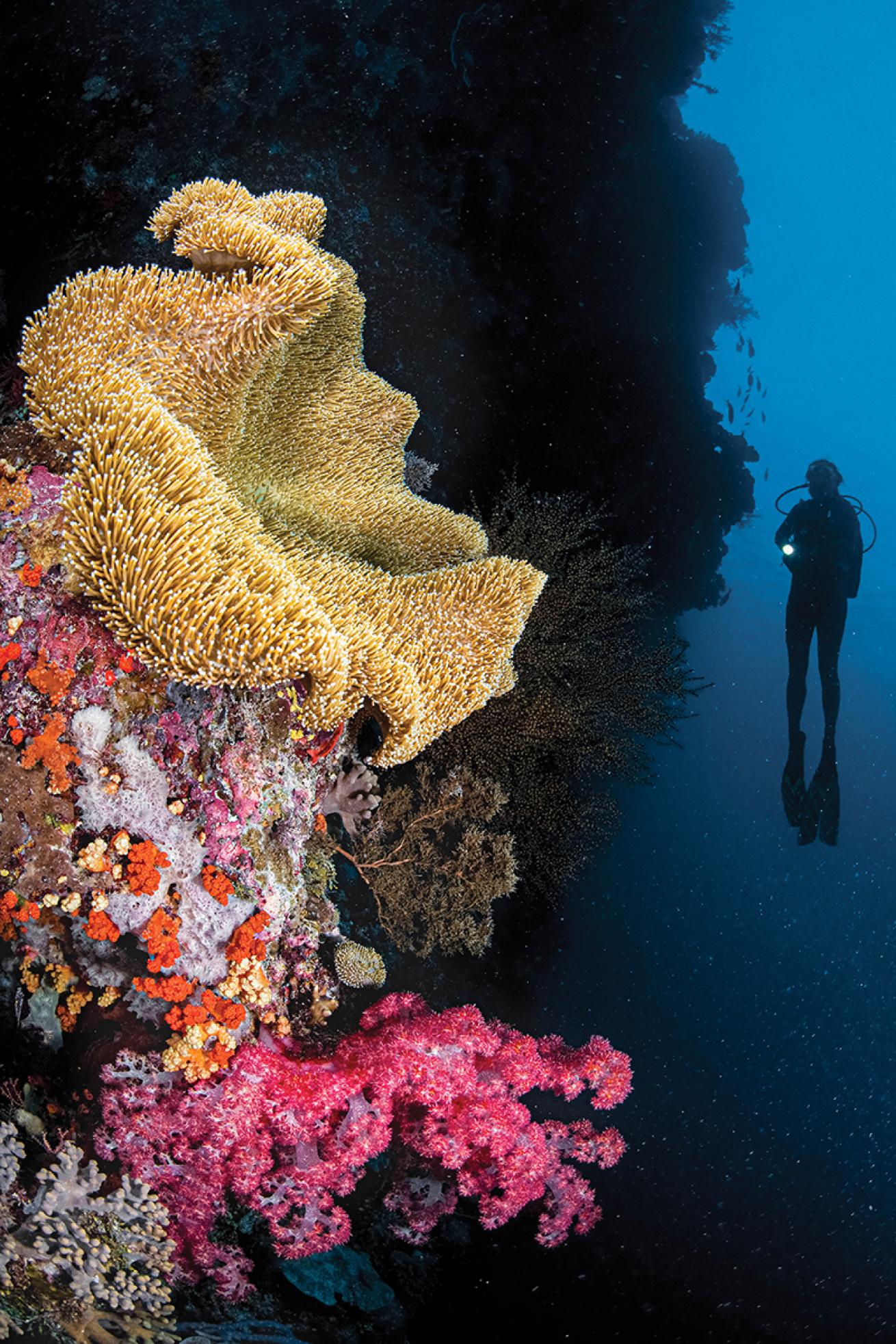
John MuhillyA diver explores Indonesia's Wakatobi National Park.
Take Wakatobi Dive Resort on Tomia Island in the Wakatobi Marine National Park, south and east of the island of Sulawesi. There, qualified guests can take advantage of solo diving, decompression diving, rebreather diving and a host of other ways to explore that require training beyond the Open Water certification.
Rebreather diving is an especially satisfying way to experience the reefs of Indonesia. This destination is known for small macro wonders from jawfish to ghost pipefish that often shy away from divers who disrupt the environment with large exhalations or poor buoyancy. A rebreather diver can more seamlessly enter the reef world, causing much less disturbance. The result: longer encounters as animals continue their natural behavior uninterrupted. Says Craig Willemsen, owner of Silent World Diving in Bellevue, Washington, “Overall, it would be hard to imagine a more perfect environment for rebreather divers. You don’t have to dive a rebreather to experience all the wonderful attractions of Wakatobi, but having these systems can add yet another layer to your enjoyment of this magnificent ecosystem.”
READERS PICKS
Resorts
Wakatobi Dive Resort, Sulawesi, Indonesia
Operators
Wakatobi Dive Resort Dive Center, Sulawesi, Indonesia
Liveaboards
The Arenui, Indonesia
Dewi Nusantara, Indonesia
Pelagian, Sulawesi, Indonesia
5. Turk Lagoon, Chuuk, Federated States of Micronesia
Yes, an open-water diver can enjoy the World War II wreck-diving arena that is Truk Lagoon, but more advanced training opens up how much of that world a diver can experience.
The majority of the 60-some wrecks sit in depths ranging from 60 to 200 feet. Having more experience at deeper depths is beneficial, as is training to dive overhead environments. “The penetration diving is topnotch,” says Michael Gerken, captain of M/V Odyssey, based in Truk Lagoon.
A favorite of those with wreck-penetration skills is the Shinkoku Maru, a 500-foot Japanese Imperial Navy tanker. One route takes divers down though the smokestack into the engine room and generator room. The engine room can be a visual masterpiece to behold and photograph, with the clean lines of so many ladders and catwalks intersecting the space. Underwater for more than 70 years, the wreck and its insides have had time to collect a patina of marine growth, adding to the eerie, mysterious and compelling vibe of the interior tour.
READERS PICKS
Liveaboards
Truk Odyssey, Chuuk, Micronesia
6. Mexico
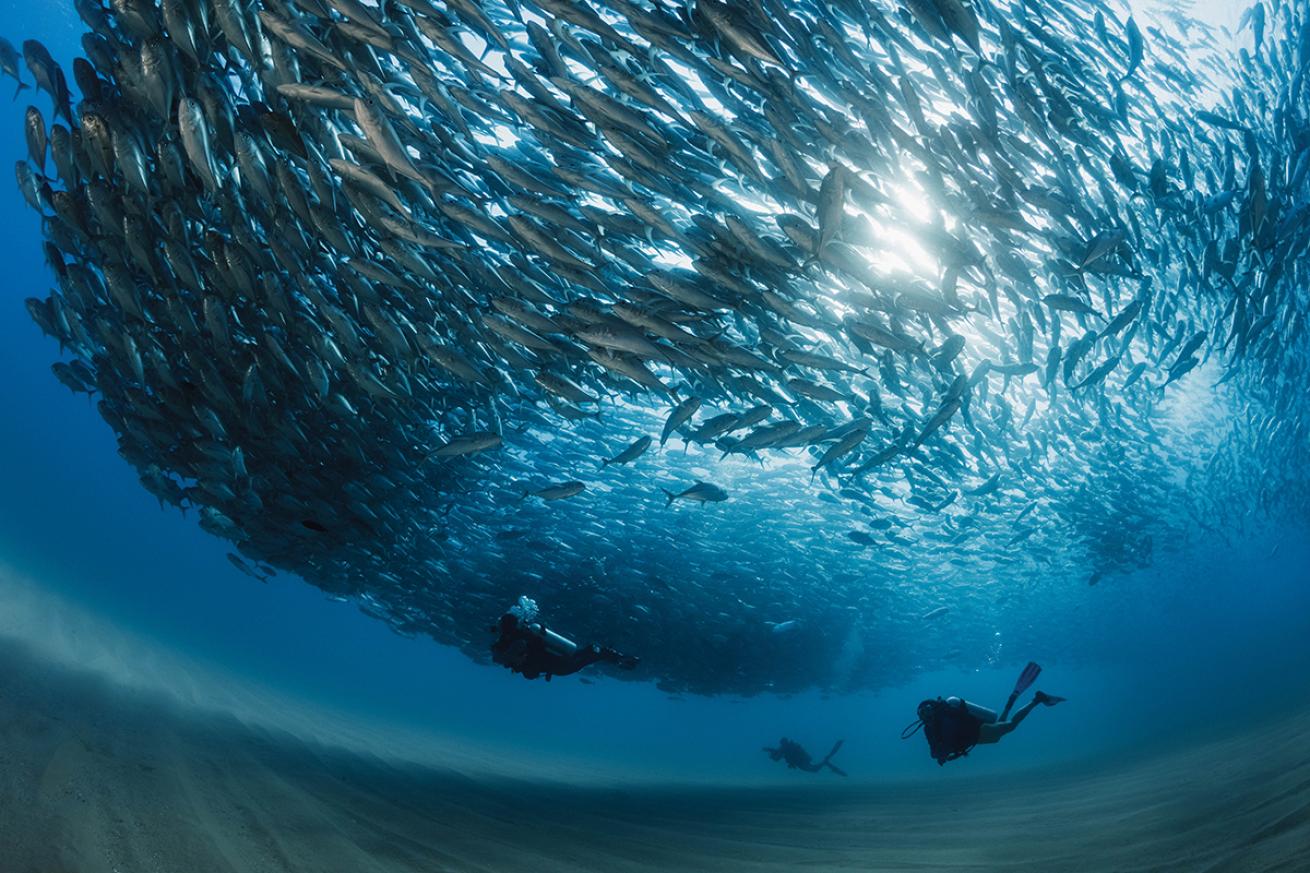
Brandon ColeA frenzy of bigeye jacks swarms divers at Camo Pulmo National Park off Mexico's Baja Peninsula.
“Cozumel is mainly easy drift diving, but in the far south, it can get extreme,” says Stephanie Phillips with the Occidental Cozumel and Allegro Cozumel resorts of the dive-centric island off Mexico’s Caribbean coast. “The southern tip offers the most dramatic seascapes and often stronger currents, giving a higher chance of spotting bigger animals.” In other words, bigger diving challenges net bigger rewards. Phillips’ list of sites meeting this high-octane criteria include Santa Rosa Wall, Barracuda, Palancar Caves and Punta Sur.
Punta Sur, just 15 minutes from Allegro and Occidental resorts by boat, provides a unique thrill in addition to the dramatic landscapes. “Devil’s Throat is a massive coral head with the most epic swim-through,” she says of the route that starts at 83 feet, leading to a room called the Foyer, often filled with glassy sweepers. “From here, it gets darker and darker to the point that you can hardly see the divemaster in front of you,” she says. “But just at the point that you might start to freak out, you see a beautiful light ahead. You pop out into that light at the edge of the wall at 135 feet, overlooking an endless drop-off below.”
Where two bodies of waters collide, divers can expect the unexpected. Baja Peninsula, on the other side of Mexico, is such a place. Here, the warm waters of the Sea of Cortez merge with the cold currents of the Pacific. “That merging creates the perfect environment yearround for encounters with sharks, baitballs, dolphins, sea lions, orcas and more,” says Jorge De Haro with the Pelagic Fleet of liveaboards operating out of the Revillagigedo Islands, 250 nautical miles south of the city of Cabo San Lucas.
At this outpost, guests on diving and freediving safaris swim alongside mama humpbacks with their calves, getting a rare look at a relationship that few on the planet will glimpse. Besides witnessing the behavior of animals in their natural habitat, divers get the experience of intimate connections with these bigger species, such as holding eye contact with humpback whales or oceanic mantas.
READERS PICKS
Resorts
Allegro Cozumel of Barcelo Hotel Group, Mexico
Hotel Cozumel, Mexico
Occidental Cozumel of Barcelo Hotel Group, Mexico
Palace Resort, Cozumel, Mexico Presidente Intercontinental, Cozumel, Mexico
Scuba Club Cozumel, Mexico
Operators
Aldora Divers, Cozumel, Mexico Cozumel
Marine World, Mexico
Manta Scuba Diving, Cabo San Lucas, Mexico
Nautilus Dive Tech, Cabo San Lucas, Mexico
Pro Dive International—Mexico, Riviera Maya
Scuba Club Cozumel Dive Center, Mexico
Liveaboards
Nautilus Explorer, Baja, Mexico Rocio Del Mar, Baja, Mexico


